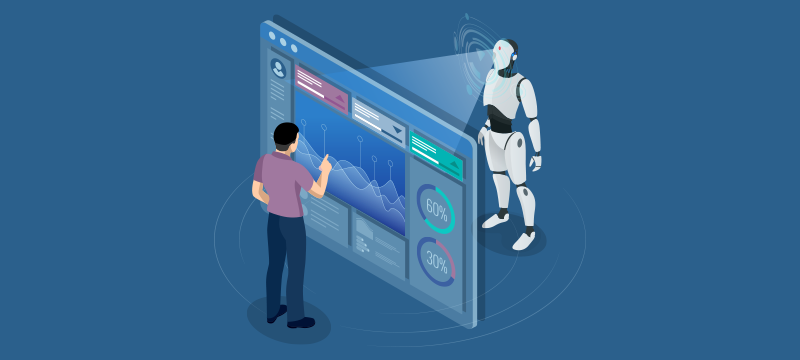Artificial intelligence (AI) is, arguably, one of the greatest technological achievements we have witnessed. Indeed, in terms of its impact on human society, it’s up there with the wheel, the printing press, antibiotics, the internal combustion engine and the internet. And though it’s still in its infancy, it’s already being widely used in industry. Here, we look at the many ways enterprises are using AI today.
1. Speech recognition
One of the key attributes of intelligent human life is our ability to use language. Today, the only other entity on earth capable of achieving this remarkable feat is artificial intelligence. While its development is still a work in progress, its ability to recognise speech, follow spoken instructions and respond in a way that humans can understand makes it exceptionally useful for enterprises.
Speech recognition has many applications, for instance, it is used by apps like Word for dictation and reading aloud, on business phone lines to recognise caller responses and speed up call processing, and it’s built into phones and smart speakers, as virtual assistants, to interact with humans and carry out their commands. It’s what makes Alexa able to order products, make phone calls, set up meetings, create reminders and control the growing number of smart devices used at home and in the workplace.
2. Data-driven insights
While AI might not have achieved the linguistic abilities of humans just yet, its ability to discover patterns and trends in enormous amounts of data, and do so with incredible speed, is significantly superior to what humans can achieve. AI-enabled, big data analytics is one of the most valuable tools for enterprises as it can provide previously unobtainable insights from both historic and real-time data and give reliably accurate predictions for the future. This enables companies to make data-driven decisions, across every part of the organisation, helping them reduce risk, cut costs and innovate and market new products and services.
3. Biometric security
The growing sophistication of cybercriminal tactics means enterprises need to respond with sophisticated security measures of their own. Biometrics is at the forefront of this advancement, replacing weak authentication credentials, like usernames and passwords, with unique biological markers, like speech patterns, iris scans, fingerprints and facial features.
Able to recognise the biological identifiers for individual people, biometrics can be used not only for logical access control to computer systems but for physical access too, controlling who can access buildings, rooms and machines.
4. Robotics
Combining artificial intelligence with physical machinery empowers enterprises to do so much more. Computerised robots have been used for decades on manufacturing lines, especially in the car industry, but all they could do was follow instructions. With AI, they can carry out processes that require greater cognitive abilities. On production lines, for example, they can identify poor standard products on conveyor belts and work out how to remove them without removing any of the good products, something that demands understanding and dexterity. As a result, quality assurance is increasingly automated and the demand for human inspectors is reduced.
We are also seeing a growing number of robots that can move independently, navigating their way not just around commercial spaces, but even around towns and cities. From working as warehouse product collectors to delivering takeaways, AI-enabled robots are now carrying out many jobs that previously required human labour.
5. Machine learning
An advanced form of AI, machine learning (ML) is where computers are configured to perform tasks better over time. Rather than having their programming updated, they can learn how to evaluate structured data better the more they use it. This means they can be given new data, something they may not be familiar with, and still be able to process it. For example, AI that is programmed to scan roads and identify different models and makes of vehicles might, with ML, be able to recognise and identify new models and makes that appear on the roads even if they were not included in its original database. This type of learning can be used in a wide range of ways across all sectors.
6. Deep learning
To date, deep learning is the most advanced form of AI and takes machine learning to a whole new level by modelling computer behaviour on the human brain. Just as brains have neurons, deep learning algorithms have complex and highly connected neural networks. These algorithms rely on enormous amounts of data but require very little human intervention.
Deep learning has many uses. For example, some algorithms work in processing images, identifying everything from faces in crowds to signs of climate change or troop movements in satellite images. Other algorithms make use of memory, keeping previous decisions in mind to contextualise the analyses of current data. This helps algorithms understand language better and self-driving vehicles improve their driving skills.
Conclusion
AI is already becoming an important tool in how we work and live our lives and is set to play a much bigger role in the future. Enterprises wanting to keep pace with competitors will need to take advantage of it as it becomes ubiquitous. To do so, however, they will also need to ensure that they have the infrastructure in place to deploy it quickly. Today, that infrastructure lies in the cloud, the environment for which most AI algorithms are developed.
For more information about our enterprise cloud solutions, visit Hyperslice.com.

